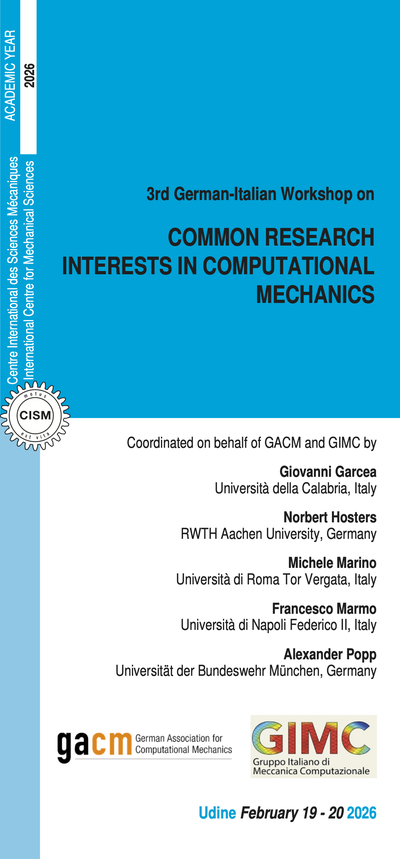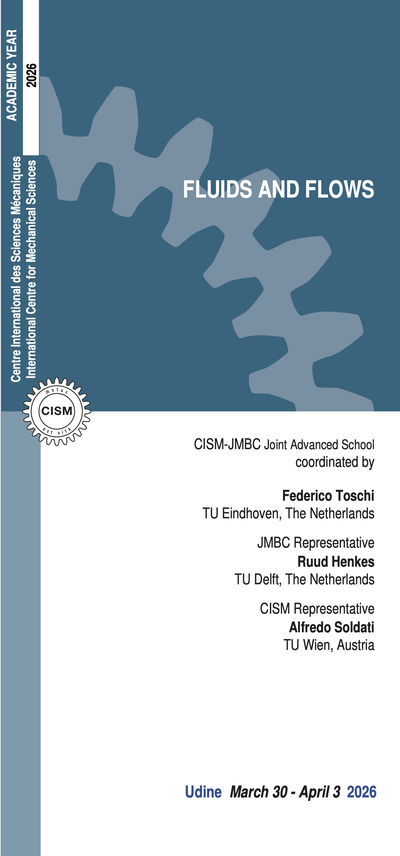Recently, there has been a strong interest in the development of new micro- and nanomaterials, in particular, nanofibers (NFs), for biomedical applications. The aim of this course is to provide state-of-the-art information on the development of nanofiber-based materials and devices for advanced biomedical purposes. With this objective, the course aims at covering the design of fibrous nanomaterials at the forefront of biomedical sciences reviewing the most important areas from fiber fabrication modeling to their final application.
Core-shell fibers with healing agents are key element for self-healing vascular composite materials used to sustain mechanical properties and for corrosion protection. Sustainable NF-based triboelectric nanogenerators comprised of biopolymers will also be discussed.
Soft thermo-pneumatic artificial muscles and actuators with the embedded NFs impregnated with ethanol and blister-like thermo-pneumatic soft actuators, which deflect in response to heat supplied to their bottom are an important step toward NF-based soft robotics. Metallized NFs are electrically conductive and highly transparent materials, which hold great promise as three-dimensional heaters, sensors, and treatment of aneurysmal subarachnoid hemorrhage.
Optical, electronic, and photonic properties of NFs can also be highly important for electro-mechanical and biomedical devices. Based on a variety of functional compounds such as conjugated polymers, organic light-emitting molecules, dyes, piezo-polymers, etc., NFs can be used as building blocks of miniaturized dielectric waveguides, optical amplifiers, solid-state lasers, active fiber optics, and surface-coating elements of great relevance for lab-on-chip architectures, electro-mechanical devices, wearable and implantable technologies.
Electrostatic interactions between polyelectrolytes and increased entropy resulting from counter-ion release are the main driving forces for polyelectrolyte complexation. We discuss formation of NFs from polyelectrolyte complexes as a function of polymer molecular weight and concentration, and solution ionic strength and pH. The applications of polyelectrolyte complex fibers for actuation and drug release will be discussed. We will show several approaches of modeling hydrodynamic transport of nanofibrous suspensions and experimental methods used for evaluating their interactions in micro and nanoscale environment. We will also discuss properties of materials for cancer treatment developed over the past few decades.
NFs are used for developing new composite materials. They have proven to be one of the most effective ways to improve toughness of matrix polymer and the delamination resistance of structural composites. It is hence important to understand the mechanics of NFs and their related materials.
This course is directed towards senior year undergraduate students, graduate students, researchers, engineers and practitioners in industry. It will be of special importance for those interested to develop novel devices and models based on nanofibers from the in-depth and comprehensive exposition of physical foundations of such devices and related phenomena.
A.L. Yarin et al. Fundamentals and Applications of Micro- and Nanofibers. Cambridge University Press, 2014.
A. L. Yarin et al. Self-Healing Nanotextured Vascular Engineering Materials. Springer Nature, Switzerland AG, 2019.
S. An et al. Blister-like soft nano-textured thermo-pneumatic actuator as an artificial muscle. Nanoscale 10, 16591 (2018).
M.-W. Kim et al. Packing of metalized polymer nanofibers for aneurysm embolization. Nanoscale 10, 6589 (2018).
M. Boas et al. Electrospinning polyelectrolyte complexes: pH responsive fibers. Soft Matter 11, 1739 (2015).
L. Daelemans et al. Damage-resistant composites using electrospun nanofibers: a multiscale analysis of the toughening mechanisms. ACS Applied Materials & Interfaces 8, 11806 (2016).
D. Pisignano, Polymer Nanofibers, Royal Society of Chemistry (RSC), Cambridge 2013.
M. Gaio et al. A nanophotonic laser on a graph. Nature Communications, 10, 226 (2019).
F. Di Benedetto et al. Patterning of light emitting conjugated polymer nanofibers. Nature Nanotechnology, 3, 614 (2008).
F. Pierini et al. Polymer-based nanomaterials for photothermal therapy: From light-responsive to multifunctional nanoplatforms for synergistically combined technologies. Biomacromolecules, 19, 4147 (2018).
S. Pawłowska et al. Fibrous polymer nanomaterials for biomedical applications and their transport by fluids: an overview. Soft Matter, 14, 8421 (2018).
P. Nakielski and F. Pierini. Blood interactions with nano- and microfibers: recent advances, challenges and applications in nano- and microfibrous hemostatic agents, Acta Biomaterialia, 84, 63 (2019).
L. Daelemans et al. Excellent nanofiber adhesion for hybrid polymer materials with high toughness based on matrix interdiffusion chemical conversion. Advanced Functional Materials, 29(8). (2019).
4 lectures on: Thermo-mechanical analysis of electrospun fibers, fibrous assemblies and nanocomposite films enhanced with nanofibers, composites enhanced with electrospun fibers: failure mechanisms and micromechanical mechanisms of nanofibers, composites enhanced with electrospun fibers: from delamination lab-testing to realistic composites.
with Filippo Pierini
8 lectures on: Hydrogels: mechanical properties, transport properties of particles, droplets, filaments, hydrogels for drug delivery and tissue recovery, electrically conductive network polymer nanomaterials, stimuli-responsive nanomaterials for biomedical application, nanofibrous hemostatic agents: blood-nanofiber interactions.
6 lectures on: Electrospinning of polymer solution, electrical and rheological properties of charged polymer jets, formation of the precursor of electrospun jets, driven bending instability, modeling the electrospinning process: numerical approaches, alignment of electrospun nanofibers.
Filippo Pierini will hold his lectures along with professor Tomasz A. Kowalewski
6 lectures on: Organic light-emitting materials, organic and plastic devices: sensing, biosensing, microfluidics; wetting of nanofibrous materials, photonics based on polymer NFs, piezoelectric NFs: interplay with light-emitting materials, NFs for biomedicine and cell cultures.
6 lectures on: Self-healing vascular nano-textured materials, biopolymer nanofibers and their applications, soft robots and actuators based on nanofibers, sustainable biopolymer nanofiber-based triboelectric nanogenerators, metallized nanofibers, nanofiber-based heaters and sensors.
6 lectures on: Polyelectrolytes-based nanofibers, polyelectrolytes complex nanofibers, actuation based on polyelectrolytes complex nanofibers, drug release based on polyelectrolytes complex nanofibers.





